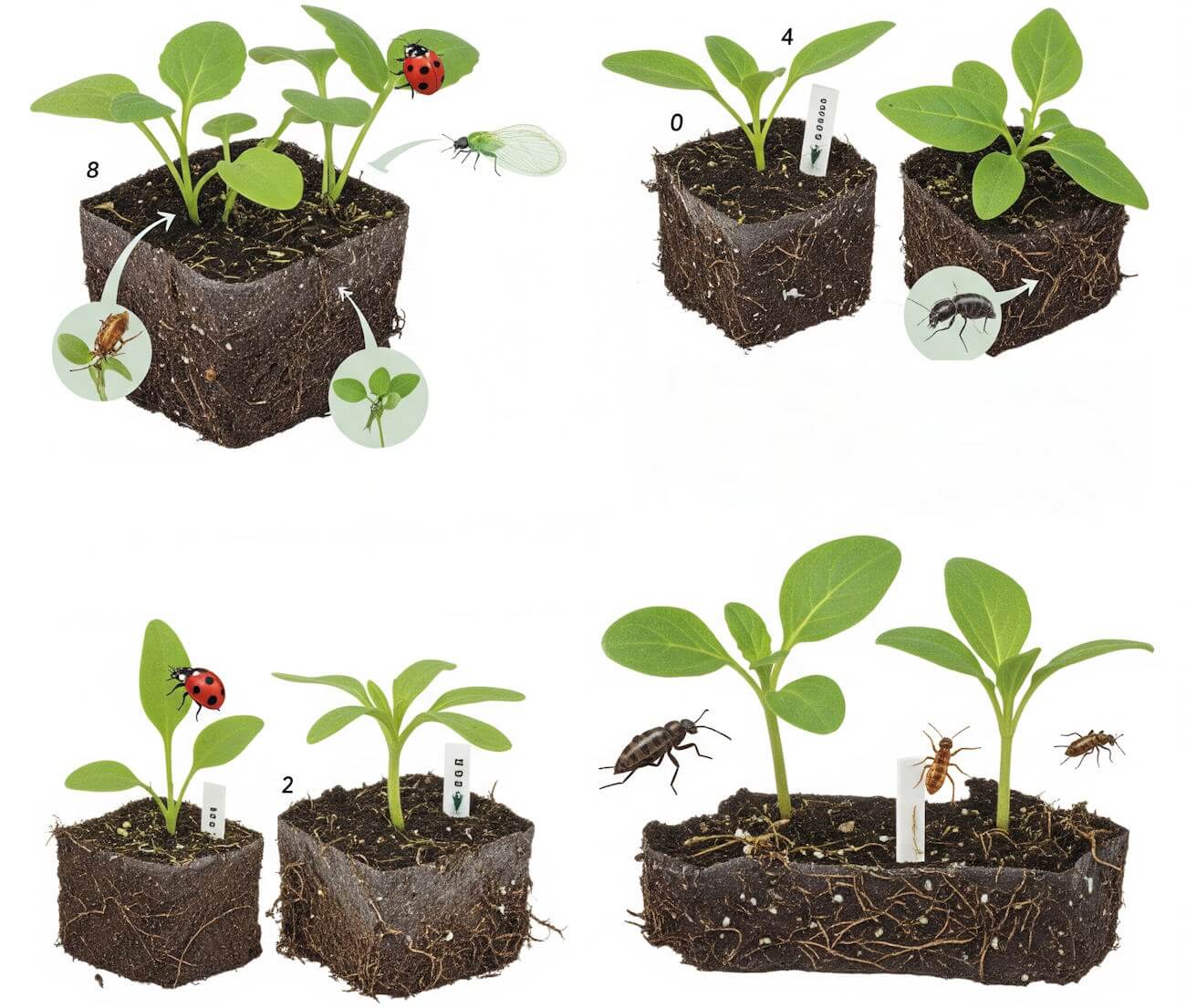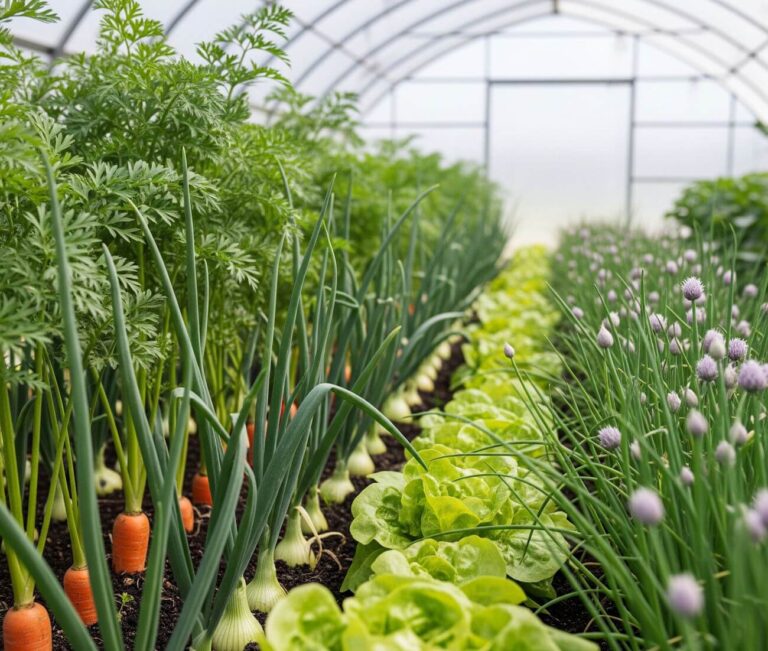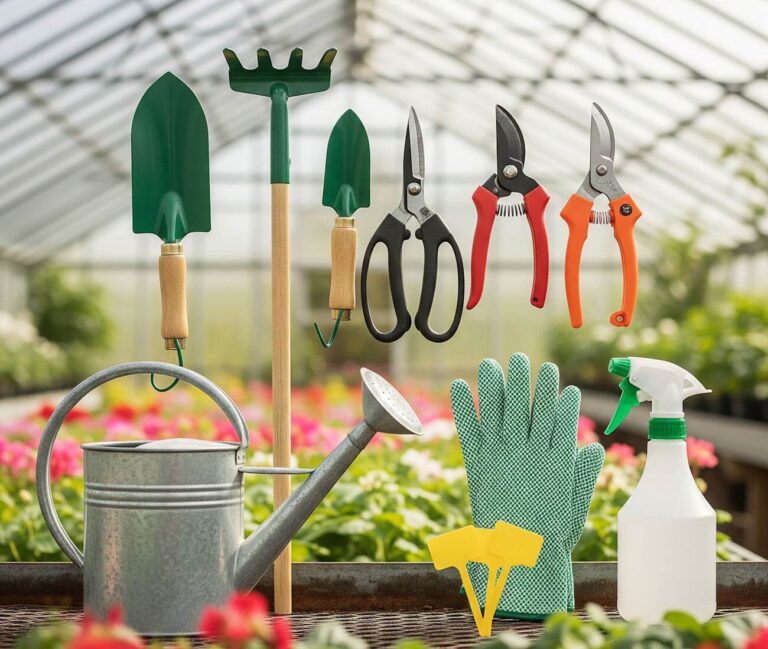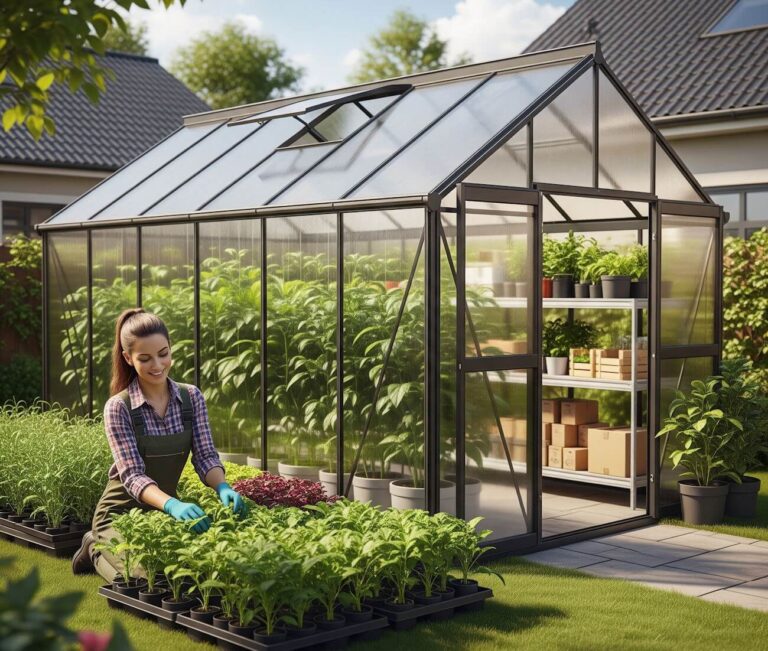Introduction to Organic Pest Control
Organic pest control is an integral aspect of sustainable agriculture, focusing on methods that prioritize environmental health and the safety of food products. This approach to pest management is characterized by the use of natural agents and practices that deter pests without relying on synthetic chemicals. The key distinguishable factor between organic and conventional pest control lies in their methods. While conventional practices often rely on chemical pesticides that may pose risks to human health and the environment, organic methods advocate for a more holistic approach, integrating natural biodiversity and ecological balance into crop production.
In organic farming, various techniques are implemented to manage pests effectively. These can include the use of beneficial insects, natural repellents, and environmentally friendly traps. Additionally, cultural practices like crop rotation, companion planting, and maintaining healthy soil contribute to pest control by enhancing the overall resilience of the plants. Such methods foster an ecosystem where natural predators can thrive, ultimately reducing dependence on chemical interventions and enhancing long-term agricultural sustainability.
The benefits of organic pest control extend beyond mere pest management; they significantly impact food safety and environmental conservation. By adhering to organic principles, farmers minimize the risk of pesticide residues in food and the surrounding ecosystem. Moreover, organic methods support biodiversity, which can lead to a more resilient and productive agricultural system. As consumers become increasingly aware of their choices and the implications of conventional agricultural practices, the demand for organic produce continues to rise. Thus, adopting organic pest control strategies not only ensures better health outcomes for consumers but also promotes ecological stewardship, making it a vital practice in seedling production and beyond.
Understanding Common Pests in Seedling Production
Effective seedling production can be significantly hindered by various pests, which can cause damage at every stage of a plant’s development. Among the most prevalent pests affecting seedlings are aphids, caterpillars, and fungal gnats. Understanding these pests’ characteristics and behaviors is crucial for implementing organic pest control strategies.
Aphids are small, soft-bodied insects that often cluster on the undersides of leaves or shoot tips. They typically appear in colors ranging from green to black and can reproduce rapidly, giving rise to numerous generations within a single growing season. Their feeding habits can lead to curled leaves, stunted growth, and the potential transmission of plant viruses, making their management a priority for growers.
Caterpillars, the larval stage of moths and butterflies, can also pose significant threats to seedlings. These pests are commonly recognized by their voracious appetite, leading to substantial leaf damage and, in extreme cases, the complete defoliation of a young plant. Identifying caterpillars can be done by examining plants for not only damage but also for their distinct appearance, which varies among species.
Fungal gnats, on the other hand, are small, dark-colored flies whose larvae thrive in the moist soils of seedling trays. These larvae feed on organic matter, roots, and can lead to root rot, ultimately weakening the plants and increasing their vulnerability to other pests and diseases. Control measures should focus on the lifecycle of gnats, which begins as eggs laid in wet soil, leading to effective management approaches through environmental modifications.
Recognizing and understanding the lifecycle and damage caused by these common pests lays the groundwork for effective organic control methods. Early intervention can help mitigate the risks posed by these pests, ensuring healthy seedling production and a successful growing season.
Cultural Practices for Pest Management
Effective management of pests in seedling production is critical for ensuring healthy plant growth and maximizing yield. Cultural practices play an essential role in developing an environment that deters pests. Various methods, such as crop rotation, plant spacing, and soil health practices, can be employed to reduce the likelihood of pest infestations.
Crop rotation is a fundamental technique that involves alternating the types of crops grown in a particular area over time. This method disrupts the life cycles of pests and pathogens, as many pests are highly dependent on specific host plants for survival. By rotating different plant families, growers can reduce the prevalence of pests that have adapted to the previous crop, leading to healthier seedlings.
Another critical aspect is plant spacing, which impacts air circulation and light penetration among seedlings. Adequate spacing not only promotes healthy growth but also reduces the humidity levels that create favorable conditions for pest outbreaks, such as fungal diseases. Crowded plants often experience increased competition, which can weaken them and make them more susceptible to pests. Thoughtful arrangement of seedlings allows for better airflow, ultimately contributing to a more resilient crop.
Soil health practices are equally vital in pest management. Practices such as adding organic matter, maintaining appropriate pH levels, and ensuring adequate drainage can create a more favorable environment for beneficial organisms, including predatory insects and microorganisms. Healthy soil fosters strong plants, which are better equipped to withstand pest pressures. Additionally, cover cropping can enhance soil microbiome diversity, leading to a natural reduction in pest populations.
By integrating these cultural practices into their pest management strategies, growers can significantly reduce the incidence of pest infestations in seedling production. Implementing these tactical approaches allows for a holistic method that promotes plant health, sustainability, and productivity.
Biological Control Agents
Biological control agents play a crucial role in sustainable organic pest management, particularly in seedling production. These natural predators and parasites can effectively reduce pest populations while minimizing reliance on chemical pesticides. The use of beneficial insects and microorganisms offers a holistic approach to maintaining plant health and enhancing biodiversity in agricultural systems.
Among the most recognized beneficial insects is the ladybug (Hippodamia convergens), which is highly effective in controlling aphid populations. Ladybugs are voracious eaters, consuming up to 5,000 aphids in their lifespan. By releasing ladybugs into seedling areas, growers can promote natural predation, significantly decreasing the need for chemical interventions. It is essential to introduce these insects at appropriate times when their prey is abundant, ensuring they establish and thrive in the environment.
Another effective biological control agent is the use of beneficial nematodes, which are microscopic roundworms that target various soil-borne pests, such as root weevils and caterpillars. These nematodes enter the host pest through natural openings, releasing bacteria that cause the pest’s demise. For optimal results, it is advantageous to apply beneficial nematodes during the evening or early morning when soil moisture is high, as these conditions facilitate their movement. Ensuring that the soil remains moist after application supports the nematodes’ activity and effectiveness.
Additionally, introducing parasitoids, such as wasps from the family Braconidae, can assist in controlling pest populations. These wasps lay their eggs inside or on the bodies of pest larvae, ultimately reducing their numbers as the wasp larvae consume the host. Monitoring the population dynamics of both pests and their natural enemies helps in fine-tuning biological control strategies for seedling production. Building a habitat that supports these beneficial organisms can further enhance their efficacy, ensuring a natural balance in the ecosystem.
Botanical Insecticides and Natural Repellents
In organic seedling production, utilizing botanical insecticides and natural repellents is a prudent strategy to manage pests while adhering to organic practices. These alternatives can effectively deter unwanted insects without the harsh chemicals found in synthetic pesticides. Two prominent ingredients frequently employed in this context are neem oil and garlic.
Neem oil is derived from the seeds of the neem tree, and it has been recognized for its insecticidal properties. It functions by disrupting the life cycle of various pests, inhibiting their ability to feed and reproduce. To create a homemade neem oil insecticide, mix 2 tablespoons of neem oil with 1 teaspoon of liquid soap diluted in 1 quart of water. This solution should be thoroughly shaken before use to ensure proper dispersion. Application is best done early in the morning or late in the evening to avoid harming beneficial insects and to optimize effectiveness against target pests.
Garlic is another powerful natural repellent. Its strong odor deters many common insects, including aphids and spider mites. To formulate a garlic-based repellent, blend 2 whole bulbs of garlic with 1 quart of water, then allow the mixture to steep overnight. Strain the liquid and add a few drops of dish soap to help the solution adhere to leaf surfaces. This garlic spray should be applied weekly, particularly after rainfall, as moisture can diminish its potency.
Timing plays a crucial role in the effectiveness of these botanical insecticides and natural repellents. It is advisable to apply these solutions early in the growing season, when seedlings are most vulnerable to pest infestations. Regular monitoring of pest activity and timely reapplication of these mixtures will enhance their efficacy, providing a sustainable method of pest control in organic seedling production.
Integrated Pest Management (IPM) Approaches
Integrated Pest Management (IPM) is an ecological-based strategy that combines various approaches to manage pests while minimizing environmental impact and promoting sustainable practices. This multifaceted approach is particularly beneficial in seedling production, where young plants are vulnerable to various pests. The principles of IPM emphasize the importance of understanding the pest’s biology, their environmental conditions, and available organic control strategies to create a comprehensive management plan.
One of the cornerstones of IPM is cultural control, which involves modifying the environment and cultivation practices to reduce pest infestations. Practices such as crop rotation, optimal plant spacing, and the use of resistant plant varieties can significantly limit pest populations. For instance, rotating seedlings with crops that are less susceptible to common pests disrupts their life cycles, reducing their presence and impact on the plants.
Another essential component of IPM is biological control, which introduces natural predators or pathogens to manage pest populations. Utilizing beneficial insects, such as ladybugs or lacewings, can effectively control aphid populations without harming the seedlings. Furthermore, microbes that act as natural pesticides can also be employed, offering an environmentally friendly solution to pest problems that may arise during seedling growth.
Mechanical control techniques are equally vital within an IPM framework. Regular inspections, the use of traps, and the manual removal of pests are effective mechanical strategies that can be applied to safeguard seedling production. Moreover, employing physical barriers—such as row covers or netting—can prevent pests from accessing seedlings, thus enhancing plant health.
By integrating these diverse control strategies, producers can create an effective pest management system tailored to their specific seedling production needs, ultimately leading to healthier plants and improved yields while safeguarding the environment.
Monitoring and Early Detection Techniques
Effective pest control in seedling production begins with meticulous monitoring and early detection techniques. Early identification of pest problems is crucial for preventing small issues from escalating into major infestations. Growers should implement a systematic approach that involves regular inspections, the use of traps, and meticulous record-keeping of pest populations. These practices not only safeguard the health of seedlings but also enhance overall productivity.
Regular inspections are fundamental to detecting early signs of pest activity. It is advisable for growers to inspect plants at least once a week, looking for visible symptoms of pest damage, such as discolored leaves or unusual growth patterns. During inspections, it is essential to check both the tops and undersides of leaves, as well as the soil for any signs of pests like aphids, caterpillars, or beetles. Early detection can significantly reduce pesticide use, thereby aligning with organic farming principles.
In addition to direct inspections, incorporating traps can be an effective strategy. Sticky traps and pheromone traps help in monitoring pest populations by capturing insects and providing visual evidence of pest pressures. The placement of these traps should be strategic, focusing on areas where seedlings are most susceptible to infestation. Regularly reviewing the capture data from the traps assists growers in determining appropriate timing for control measures.
Keeping accurate records of pest populations and their activity can further enhance monitoring efforts. Utilizing software or simple spreadsheets will enable growers to track trends over time, thus identifying peak pest periods and associated crop vulnerabilities. This information can guide future plantings and pest control strategies, making it a critical component in integrated pest management.
In conclusion, adopting effective monitoring and early detection techniques can dramatically improve the management of pests in seedling production. By combining regular inspections, the use of traps, and diligent record-keeping, growers can proactively address pest issues, maintaining healthy plants and sustainable practices in organic farming.
Challenges in Organic Pest Control
Organic pest control, while promoting environmental sustainability and reducing chemical usage, presents several challenges that practitioners must navigate. One of the foremost issues is pest resistance. Over time, pests may evolve and develop resistance to organic methods, similar to the way they adapt against synthetic pesticides. This evolutionary adaptation can reduce the effectiveness of previously successful organic strategies, necessitating persistent innovation and alternative approaches to manage these resilient species.
Another significant challenge is the need for continuous vigilance. Organic pest control often relies on preventive measures rather than reactive ones. Farmers must regularly monitor their crops for pest infestations, which can be labor-intensive and time-consuming. In addition, environmental conditions, such as climate change and seasonal variations, can impact pest populations unpredictably, complicating the management process. Consequently, growers need to commit to ongoing education and training in organic practices to remain informed about the most effective control methods.
Moreover, organic pest control may occasionally yield lower success rates compared to conventional methods. Traditional chemical pesticides often provide rapid and efficient eradication of pests, while organic methods may result in slower action. This can be particularly problematic in cases of severe pest outbreaks where immediate control is essential to protect crops. Thus, the efficacy of organic strategies can vary significantly depending on the pest species, crop type, and growing conditions, resulting in an uneven performance that farmers must contend with.
Despite these challenges, many growers continue to favor organic pest control due to its ecological benefits and alignment with sustainable agricultural practices. As research advances and innovative techniques are developed, it is anticipated that these challenges will be addressed, leading to more effective organic solutions in the future.
Conclusion and Best Practices
In summary, effective organic pest control strategies are vital for successful seedling production, fostering a healthy ecosystem while minimizing the reliance on synthetic chemicals. Throughout this discussion, we have examined various methods, including crop rotation, the use of beneficial insects, and plant diversity. Each of these approaches not only mitigates pest pressure but also contributes to the resilience of seedlings against diseases and environmental stresses.
To effectively implement organic pest control, it is essential to adopt a proactive mindset. This involves monitoring seedlings regularly for signs of pest activity, which allows for early intervention before infestations escalate. Furthermore, maintaining environmental conditions that favor beneficial organisms can significantly enhance the natural resistance of seedlings. For example, ensuring adequate air circulation, using appropriate watering techniques, and managing humidity levels can create a less hospitable environment for pests.
Another recommended practice is the integration of organic pest deterrents, such as neem oil or insecticidal soaps, into your management routine. These products can be effective when used judiciously and in conjunction with other methods highlighted in this blog post. Additionally, fostering a rich diversity of plant species not only supports a broader array of beneficial insects but also disrupts the life cycles of specific pest populations.
Continuous education is paramount in the realm of organic pest management. Staying informed about new research, emerging organic solutions, and the latest trends in pest control will empower growers to adapt their strategies as necessary. Thus, embracing a holistic and informed approach will ensure sustained success in managing pests within seedling production.







